
home I index I latest I glossary I introductions I e-mail I about this site
St Michael, Great Cressingham
Read
the captions by hovering over the images, and click on them to
see them enlarged.
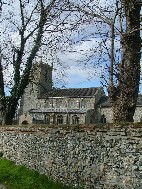
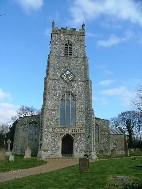
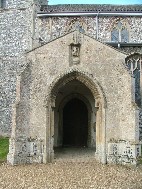
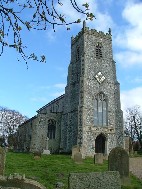
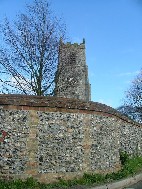
2008: We were heading west from Watton, aiming for Hilborough along the long road which runs across the top of the Battle Training Area. I noticed a signpost off to the right. "Shall we go and see if we can find the churchwarden at Great Cressingham?" I said to Peter, thinking he might be game, and of course he was. "Okay, let's give it a try", he smiled, and so we did. I had just obtained a copy of the latest Norwich Diocesan Directory, which I had picked up as surplus to requirements for 10p on the For Sale shelf in Halesworth Library (thank goodness for the profligacy of Suffolk County Council!) and so we had a list of addresses. We would go to each of them in turn and ask to borrow the key. And, after all, what was the worst that could happen? They could only say no. Well, they could hit us, I suppose, but in that case I had resolved to hit them back. But in the event, none of this was necessary. Thinking that we would look fairly foolish if we went hunting for a key when the church, by some unlikely eventuality, had been open all along, I went up to the south porch to check. The big padlock and chain were still in situ, but there was something new. On the Civil Notices board there was a small laminated notice reading A key to the church is available from the following, and underneath it were three names and telephone numbers.
When I'm about to step into a church which I've never been into before, especially when it seems against all the odds, a kind of Howard Carter-at-the-tomb-of-Tutankhamunish feeling comes over me. We stepped into a large, open space which was far lighter inside than the gloomy day outside. A forest of arcades lifted the roof above the clerestory, and led the eye to the vast chancel, the great east window flooding the building. It was rather breathtaking. The great treasure of the church is the range of 15th Century glass in the north aisle. There are remains of three sequences. Firstly, a group of six Bishops, similar to those at Wiggenhall St Mary Magdalen in the far west of Norfolk. They are obviously the work of the Norwich school. Next to them, and also the work of the Norwich school, are six angels. The two outer pairs reflect each other, one pair being reversed. There are six more angels in a further window, and together they represent three of the orders of angels. Finally, in the top lights there are three figures which appear the same at first, until you see that one is a fragment of Christ at the Resurrection, leaping from his tomb (there is one very similar at Blakeney), another is Christ at the Coronation of the Blessed Virgin, and the third appears to be Christ in Majesty. They are three parts of a rosary sequence, the Glorious Mysteries. While the glass at Great Cressingham is not well-known, even more of a secret is the fact that this church has no fewer than five figure brasses, with the inlays for a couple more. They are all late medieval. The two best are probably those for Thomasina and Richard Rysle, who died in 1497. These 45cm figures are perfect miniatures. Twice as tall is William Eyre, who wears a colar with IHC on it. His wife's figure is now missing, as is another figure which must have been a mourning son. Very curiously, the inscription underneath has been trimmed at both ends, probably as a result of the two figures being removed, but also possibly to remove the Catholic prayer clauses. The best of the figures, though, is the Priest John Aborfeld, in full eucharistic vestments of the early years of the 16th century, when time was running out for the English Catholic Church. Above all this, the nave roof is beautiful. It is late medieval, probably from the last years of the 15th century, and is supported by alternating hammer beams and arched braces. The large figures appear to be Priests (one of them is a Bishop) with angels beneath. A delightful touch is the pair of figures hard against the east wall of the nave. They are suspended above where the great rood would have been in medieval times, the representation of Christ crucified flanked by his mother and St John. The two figures extend their hands in the gestures that you can still see a Priest enact at the consecration of the Eucharist in any Catholic church in the world today.
|
Simon Knott, August 2008
Amazon commission helps cover the running costs of this site.
home I index I latest I introductions I e-mail I about
this site I glossary
Norwich I ruined churches I desktop backgrounds I round tower churches
links I small
print I www.simonknott.co.uk I www.suffolkchurches.co.uk